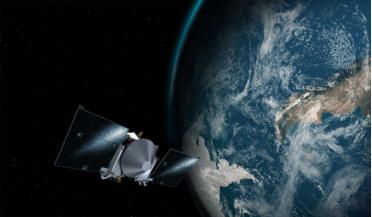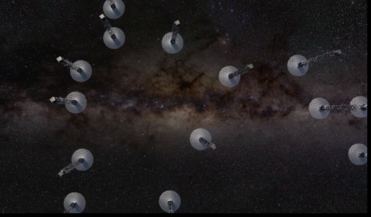 22 September 2017
OSIRIS-REx makes closest Earth approach today
22 September 2017
OSIRIS-REx makes closest Earth approach today
... – Regolith Explorer will pass the Earth around 17,000 kilometres above us in order to perform a manoeuvre known as an Earth Gravity Assist. Along with saving fuel, this manoeuvre allows the spacecraft to ’borrow’ a small amount of Earth’s orbital...
 12 June 2019
Mysterious mass found under Moon's South Pole
12 June 2019
Mysterious mass found under Moon's South Pole
... in tandem, the duo mapped differences in density of the Moon's crust and mantle to generate the highest resolution gravity field map of any celestial body. "When we combined that with lunar topography data from the Lunar...
 07 February 2020
ESA's Solar Orbiter mission set to launch on 10 February
07 February 2020
ESA's Solar Orbiter mission set to launch on 10 February
... to be ‘in resonance’ with Venus, meaning it will return to the planet’s vicinity every few orbits so that it use Venus’ gravity to alter or tilt its orbit. Data gathered by Solar Orbiter will be stored on the spacecraft, then ‘downlinked’ (or beamed...
 07 March 2018
World's first firing for ESA's air-breathing electric thruster
07 March 2018
World's first firing for ESA's air-breathing electric thruster
... to propel it through the atmosphere. The thruster builds on the work already undertaken by ESA for their GOCE gravity-mapper satellite. GOCE also utilised an electric thruster design, but it was fuelled by xenon atoms that had...
 17 December 2018
Innovative mission to view the surface of exoplanets using small sats
17 December 2018
Innovative mission to view the surface of exoplanets using small sats
... at JPL and Aerospace might one day show us just that as they are working on plans for a solar gravity lens (SGL) – a cluster of small sats which act like a lens to provide up to a 100-billion optical magnification – this...
 07 June 2019
First-ever image of cool gas disk surrounding Milky Way's black hole
07 June 2019
First-ever image of cool gas disk surrounding Milky Way's black hole
... that was seen racing around near its event horizon at about 30 percent the speed of light by ESO’s GRAVITY instrument last year. It is estimated that the temperatures reached by this turbulent, spiralling belt of gas can reach...